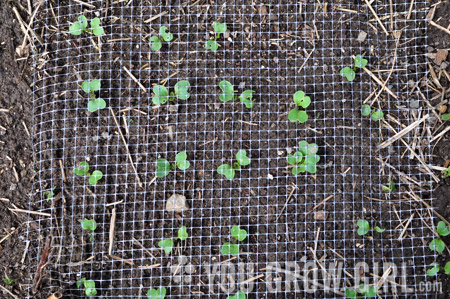
Guest post by miss gard(e)ner
Inhabit Hardiness Zones 5 through 8?
Ready to start your growing season?
The much anticipated moment has arrived.
Planning
Keep the following in mind when planning your garden:
Climate: What grows well in your region?
Space limitations: How extensive will your garden be?
Domestic habits: What would you like to eat from your garden?
Production levels: How many tomatoes do you really need?
Aesthetic desires: How would you like the space to look?
Make a list of your top ten most desired veggies. Start with them.
Seed Sowing Schedule
This seed starting chart will help you figure out exactly when to plant different seeds.
First, determine your region’s frost-free date. Ask your local plant nursery or gardener neighbor. Alternatively, check out almanac.com. The reality of weather makes an ‘exact’ date rarely exact. Keep in mind the forecasts for your region. A colder, longer winter? Push the date forward a few weeks. As they say, better safe then sorry.
Sowing Set-ups
Materials:
- Desired Seeds
- Spray bottle
- Containers
- Seed-starting soil
Containers: Gardeners have the choice of separate pots for each plant or flats holding many plants. The choice depends on various factors including your space limitations and the fragility of your desired plants. I use the separate pots or plug trays for most of my plants because there is less of a chance of damaging roots when transplanting. However, trays may be the more practical choice for lettuce, spinach, kale and other small seed crops.
Reuse last year’s small nursery pots if you have them. Alternatively, ask friends and family. Most gardeners have them lying around. If neither of these options work out, any container two to three inches deep will do, including disposable cups, yogurt containers and milk cartons. You can also buy kits at your local plant nursery. My favorites are compressed peat discs and re-useable plastic plug trays. Make sure your containers are clean by washing with hot water. Ensure that each pot has good drainage, i.e. a hole or two in the bottom. Place containers in a water-catching tray lined with pebbles. This ensures that the drained water stays out of the pot preventing root rot.
Seeds and seedlings are extremely sensitive to disease and nutrient levels. Seedlings will appreciate it if you buy a seed starting mix from your local nursery. Fill each container with soil up to 1/4 inch from the top of the container.
Ready, set… SOW!
Sowing the seeds: Moisten the soil in the containers before sowing the seeds. Put two seeds in each container to ensure something emerging. Generally, gardeners cover the seeds to a depth about 3 times the thickness of the seeds. Be sure to read seed packets for seed specific instructions. Pat the soil lightly and water with a fine mist.
Cozy Climates: Cover containers with plastic wrap to keep their environment humid. Place containers in a warm, protected place. Most seeds with germinate well at about 70 degrees F (20 degrees C).
Labeling: Be sure to label each container with the plant name and date sown. Popsicle sticks are perfect for indoor containers. Commercially available plastic or metal labels from nurseries are better for the outdoors.
Leftover seeds and packaging: Empty seed packets should be filed for future reference. Leftover seeds need to be placed in an airtight container in a dim, dry place. Seeds over 2 years old may be past their prime. Decide whether it is worth the risk next year.
Whisper best wishes to your seeds until…
They’re up! As soon as the seedlings have emerged, remove the plastic wrap. Place containers in a south or east-facing window. Gardeners may also use lights to extend the `sunshine’. Seedlings need not be as warm as emerging seeds. Keep seedlings away from radiators and heat vents to save water. If more than one plant comes up, clip the smaller one at soil level. Do not pull the plants up by the roots as this could damage the other seedlings.
Ongoing Maintenance: Mist containers with spray bottle as needed taking care to not to drown the seedlings. Remove diseased plants immediately to prevent spread.
New digs: If necessary, transplant plants from crowded trays to their own pots after they grow a second set of leaves. Some plants that spend more time indoors may need to be transplanted into larger pots. Tomatoes and peppers are likely candidates. As needed, choose the healthiest seedlings to move to 6-inch pots.
Hardening Off: A week before the plants go outside for good, acclimatize them to the changing conditions. On a warmer spring day, move plants outside to a shaded spot for a few hours. Each day increase the plants’ exposure to sun and wind. After a week, leave plants outside overnight. Then transplant them into the garden.
Whisper, “Good Luck!” They have a few more tests to pass before bearing you food.